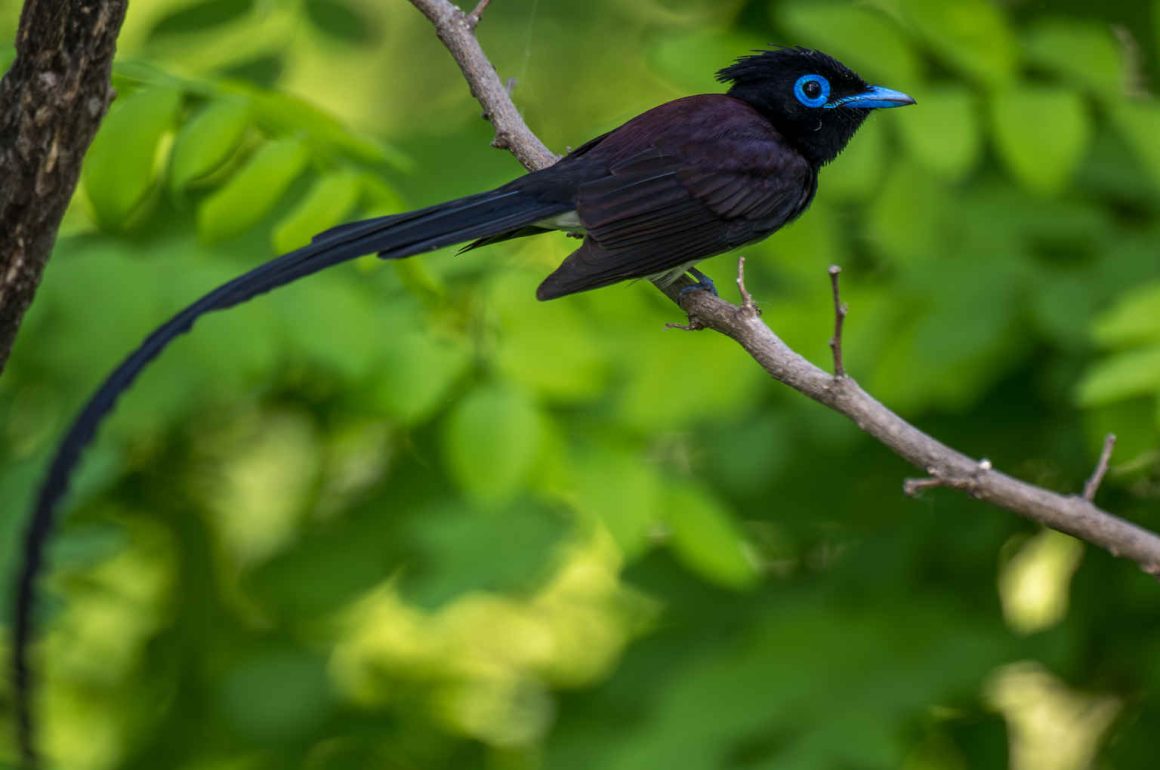
So, how was Shanghai birding in May – often the best month of the year?
Well, it included an owl, always a good thing. eBird calls the Northern Boobook “a slender brown owl with comically expressive golden eyes”.
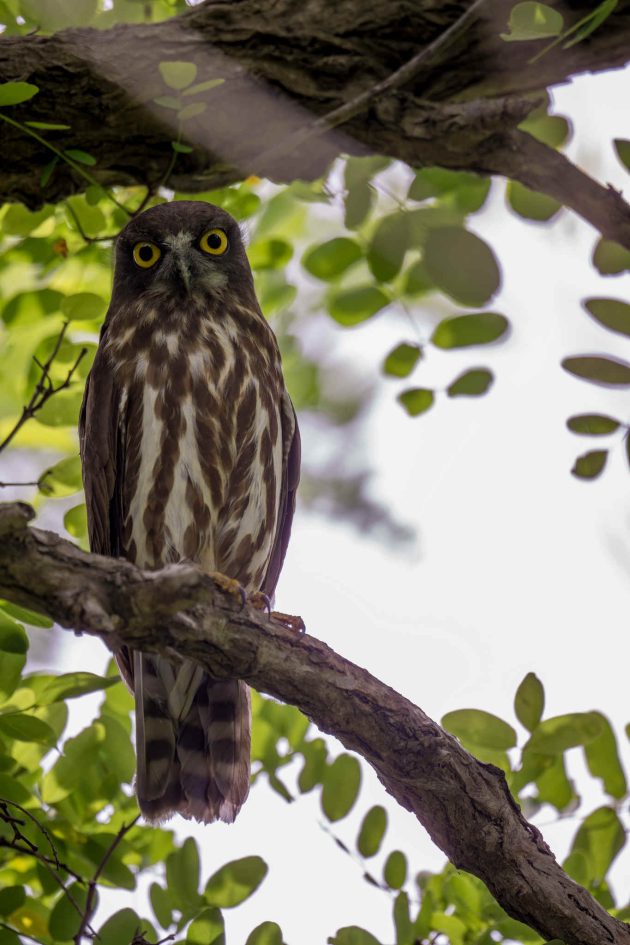
To me, it looks identical to the Brown Boobook from which it was split – but apparently, its vocalization is very different.
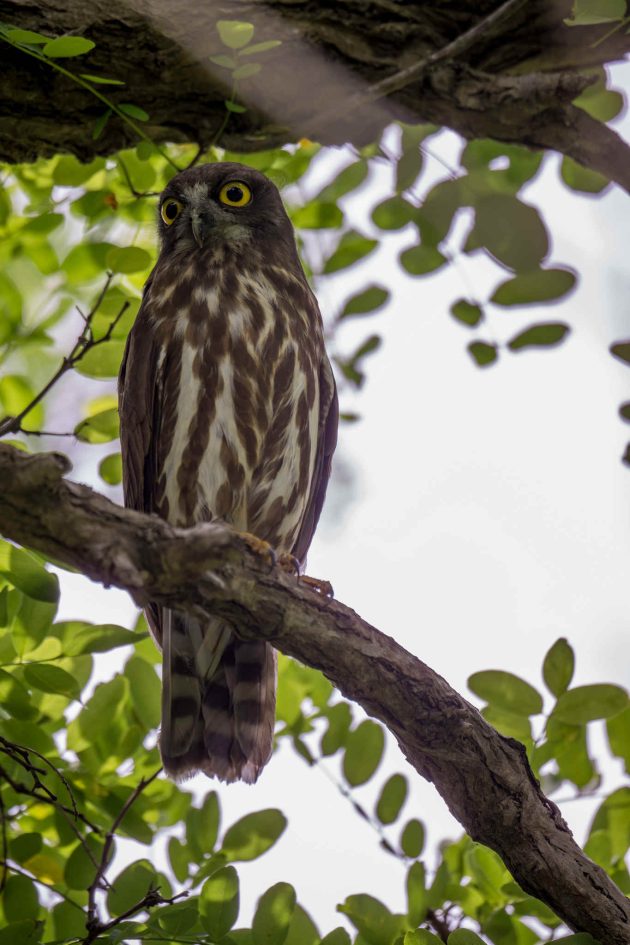
Apparently, there are two subspecies, one migratory, one not.
The species seems to provoke some online writers to produce bad writing, such as “As night envelops the forests of Malaysia, a mysterious creature awakens. With glowing eyes and silent wings, this feathered hunter rules the darkness. The Northern Boobook is an alluring owl shrouded in mystique as it carries out its shadowy rituals under the veil of night.”
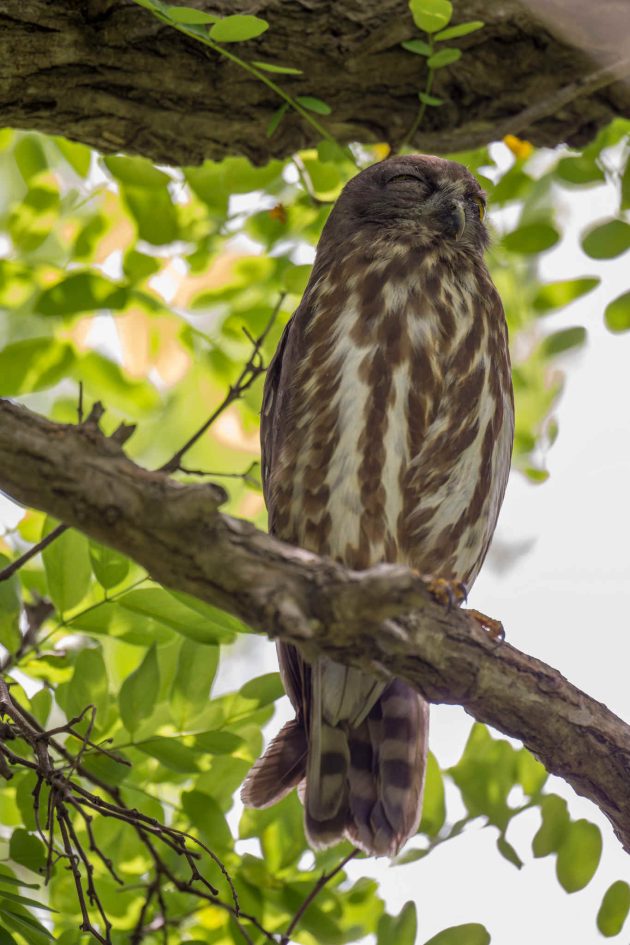
Its scientific name is Ninox japonica …
… while the name of the Japanese Paradise Flycatcher has been changed to Black Paradise Flycatcher. Maybe because the Japanese committed war crimes during WW2? (Better lose a Japanese reader than a bad joke)
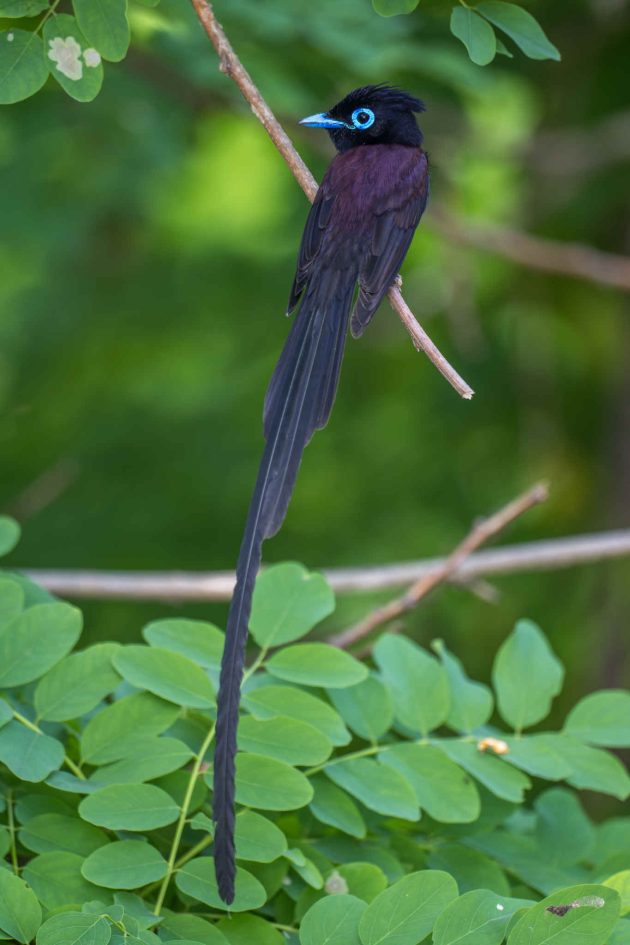
While the head of the bird is indeed black, large parts of the body are purple, reflected in the Chinese name zishoudai (zi means purple, the shoudai means ribbon).
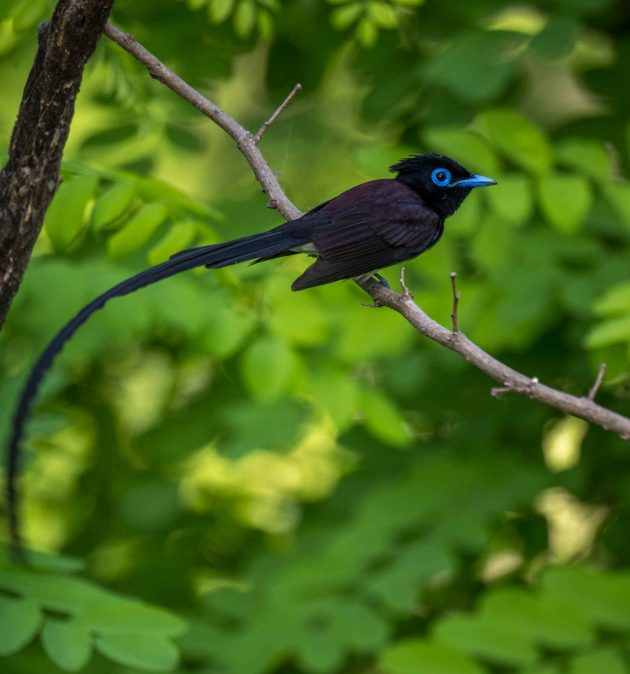
Mid-May is the best time for Shanghai birders to see one or both male Paradise Flycatcher species migrating through the city, the other being the Amur Paradise Flycatcher, which I will describe in a separate post.
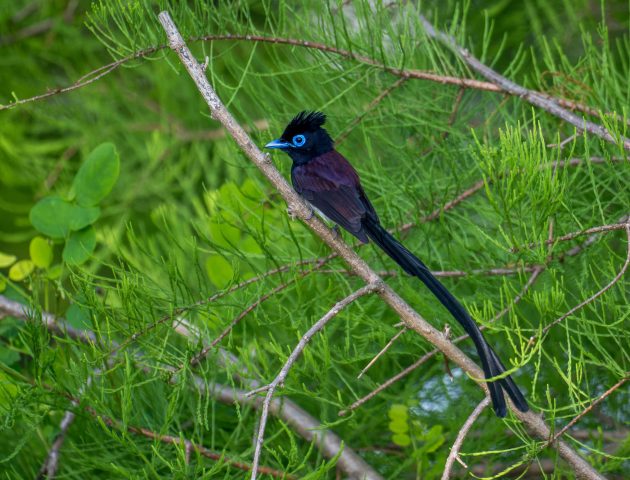
The Black Paradise Flycatcher is listed as Near Threatened as its population has declined in Japan, probably due to deforestation in its wintering range (source: HBW).
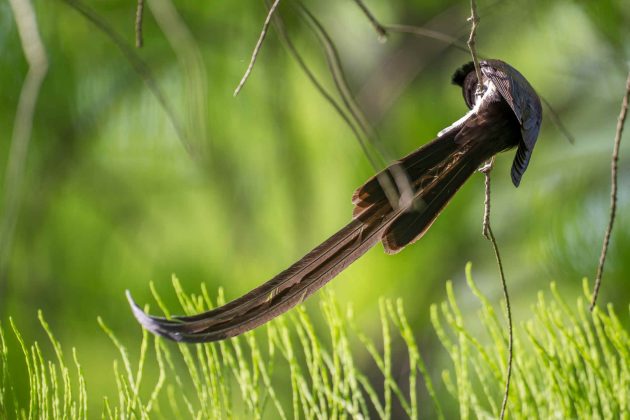
When walking through the microforests of Nanhui, one often gets spiderwebs in one’s face. It is good that the Black Paradise Flycatcher does something about this.
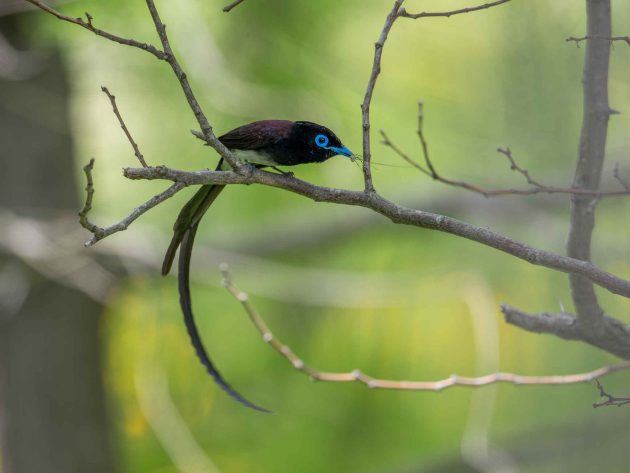
This should help birds like this Hair-crested Drongo, which clearly has crossed a few of these webs – though admittedly, this species often looks like it needs a good hair wash.
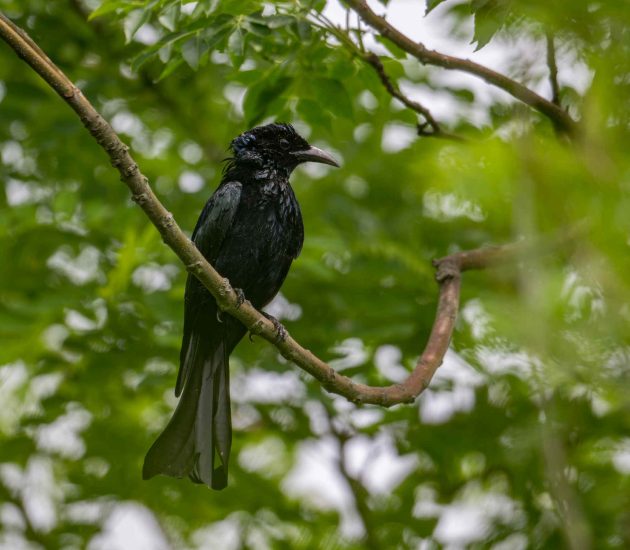
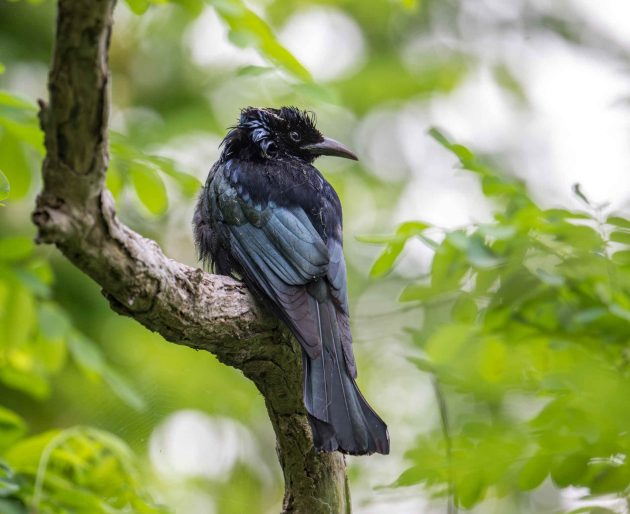
The Black Drongo hunts more in the open and thus is less affected by this issue.
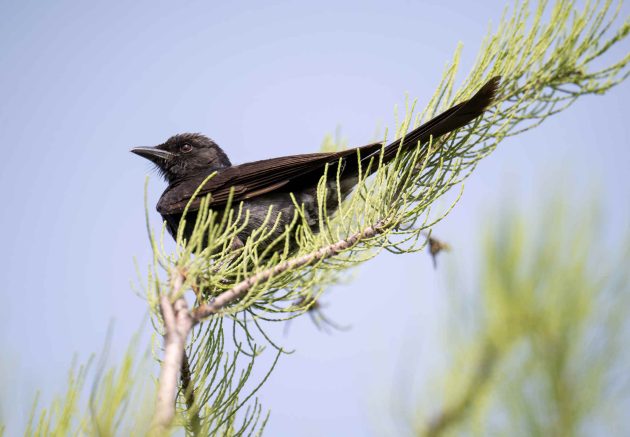
A few of the colorful robins and flycatchers were still around in early May, and because I like them a lot, here are some more photos of them: Siberian Rubythroat …
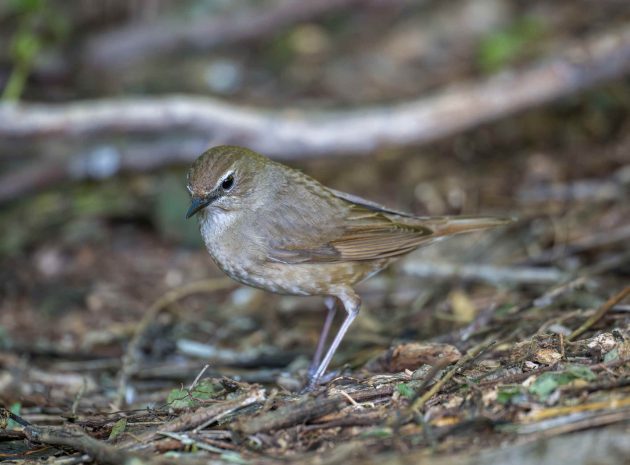
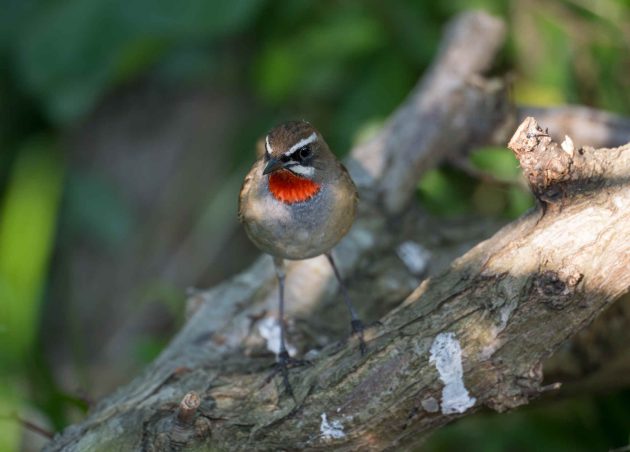
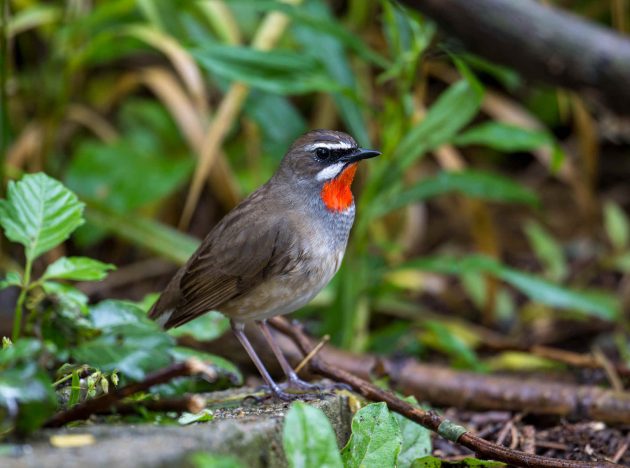

… Rufous-tailed Robin (ok, not much of a looker, but a nice song) …
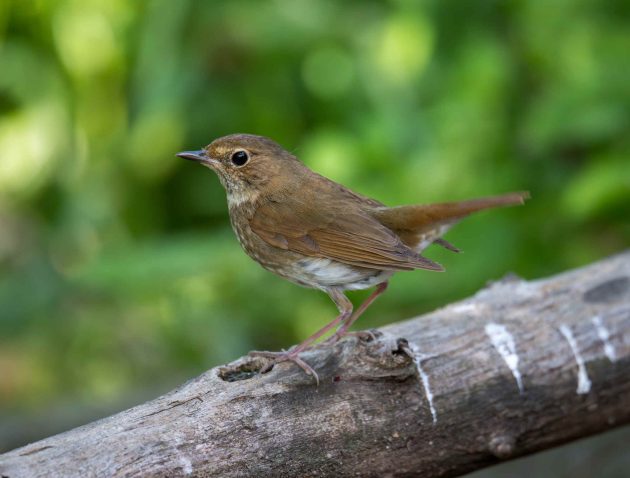
… Siberian Blue Robin …
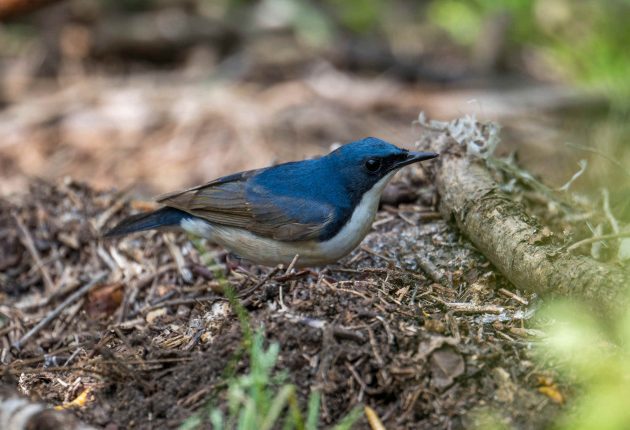
… Yellow-rumped Flycatcher …
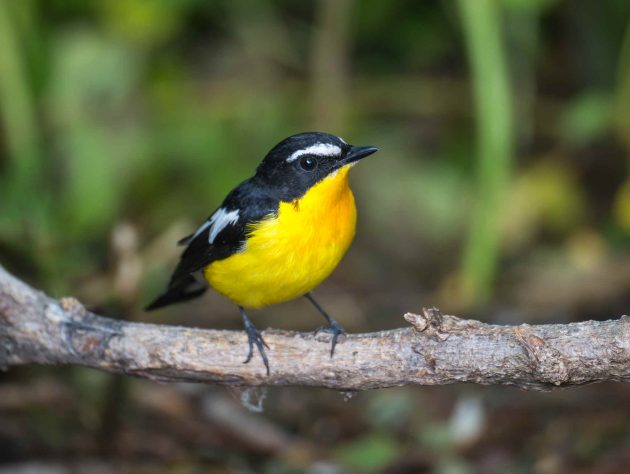
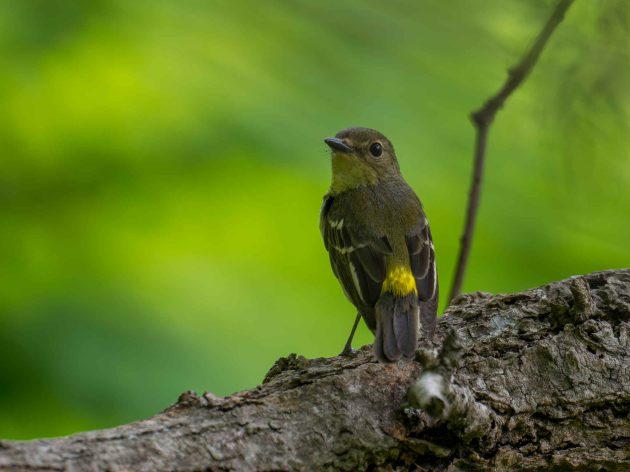
… Mugimaki Flycatcher …
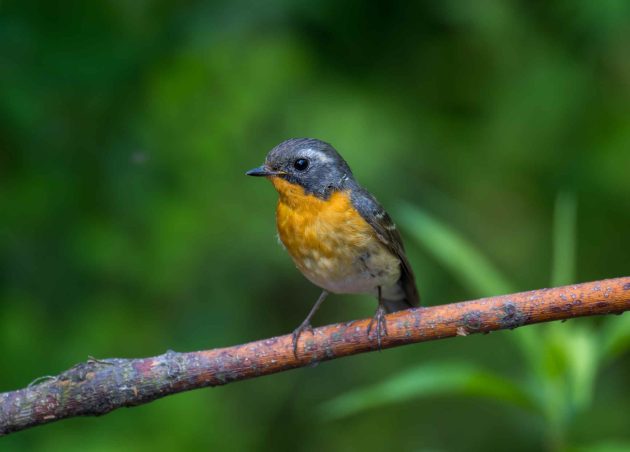
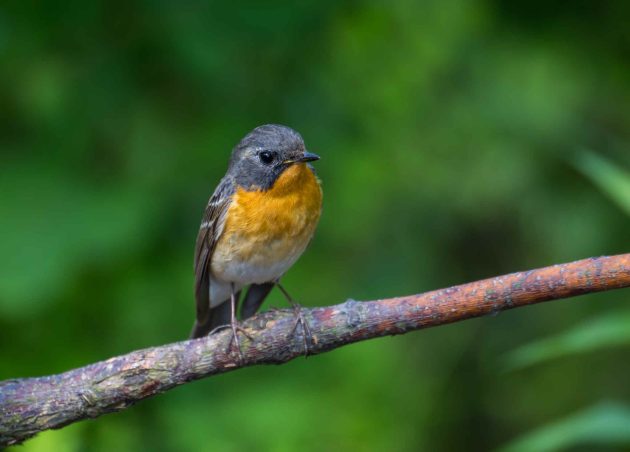
… and Blue-and-white Flycatcher …
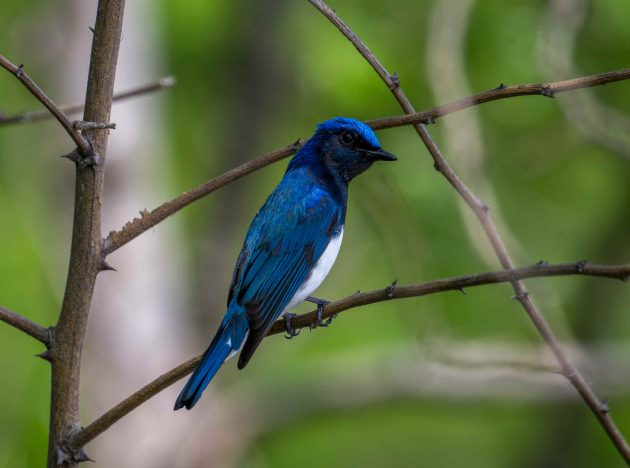
… which is apparently not afraid of food colorants.
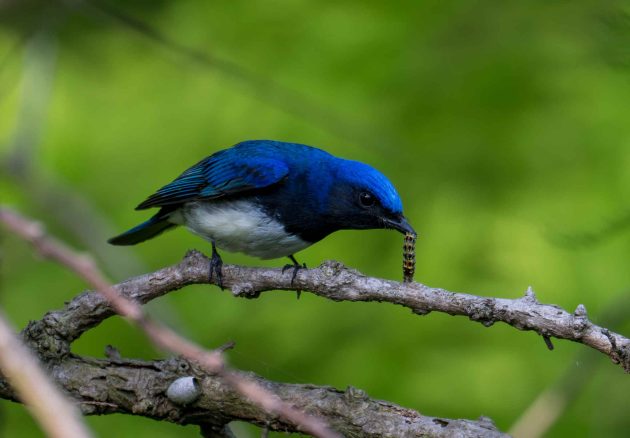
The month was low on shrikes. There were the obligatory Brown Shrikes …
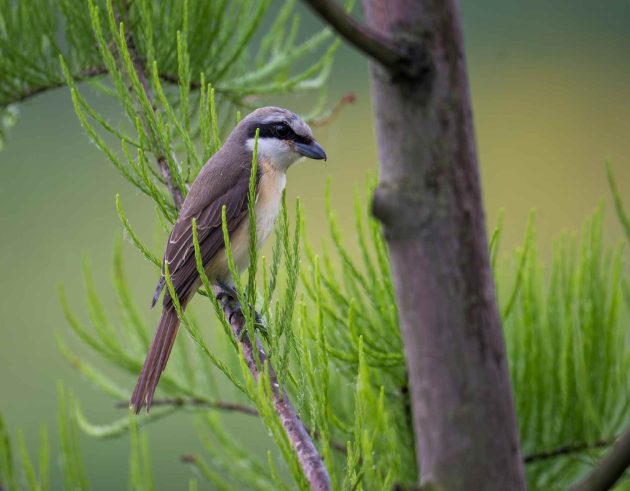
… but I only saw one Tiger Shrike and none of the other migratory shrike species.
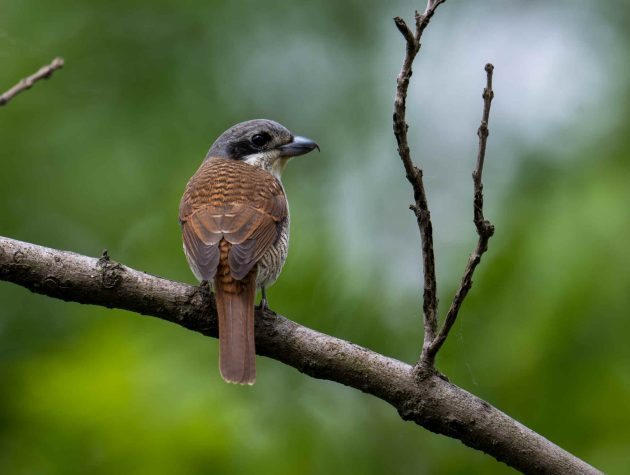
May also brought a few bulbuls which are not frequently seen in Shanghai (only the Light-vented Bulbul is – an economist would probably say that that species is crowding out all other bulbuls). So, there was the (still weirdly named) Black Bulbul …
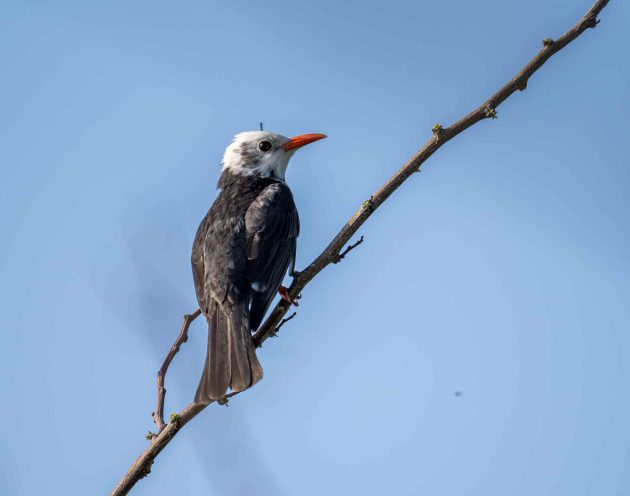
… Brown-eared Bulbul …
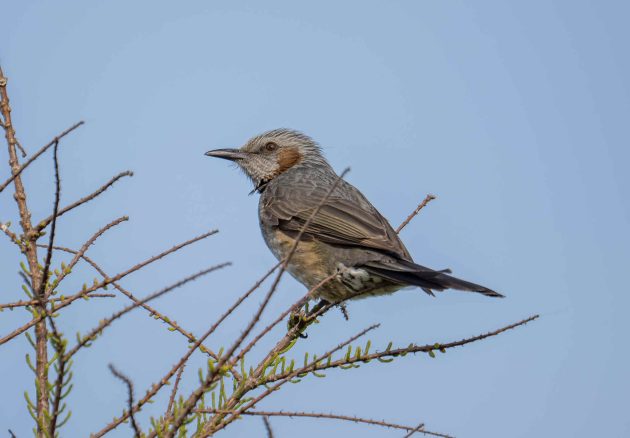
… Red-vented Bulbul …
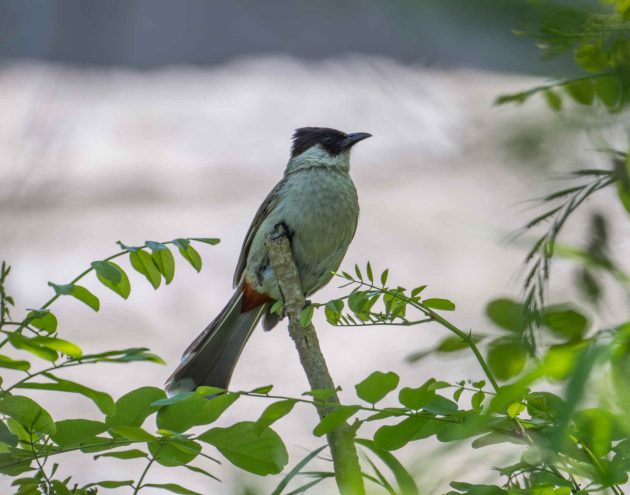
… and the Chestnut Bulbul.
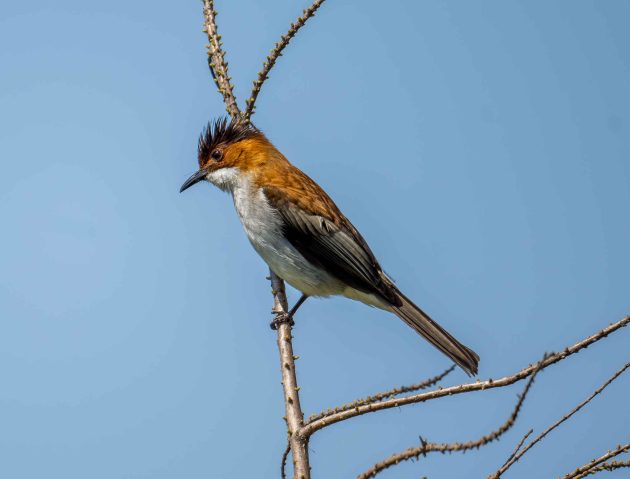
Silver-throated Bushtits are a rare sight at Nanhui, though they are common in some city parks. The photo shows a juvenile.
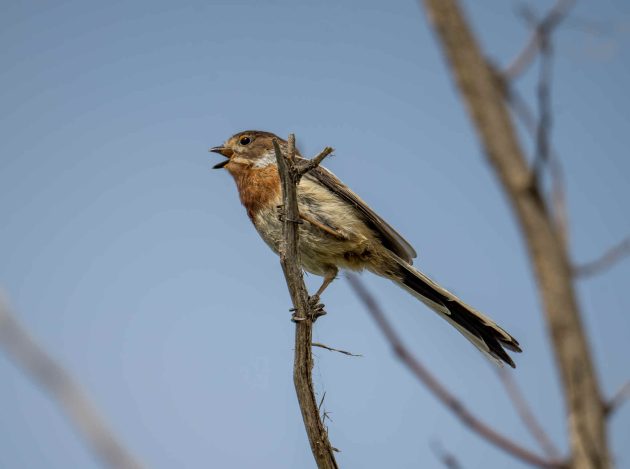
For some reason, whenever I submit a Shanghai report of a White-browed Laughingthrush on eBird, it is invariably flagged as an escapee and thus is still missing from my life list. Mysteries that make me dislike eBird – I suspect that one of the Chinese reviewers resents the fact that a stupid foreigner has the longest Shanghai list.
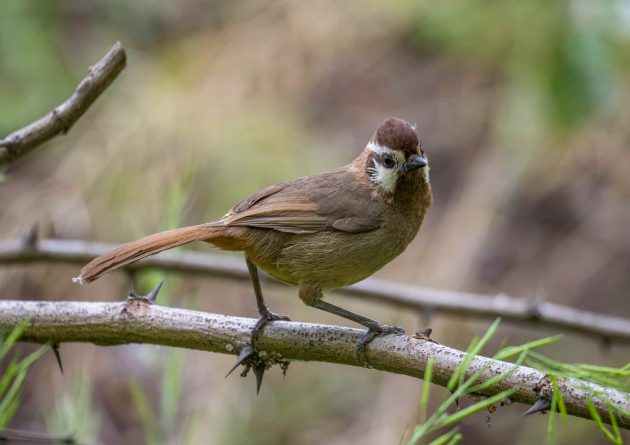
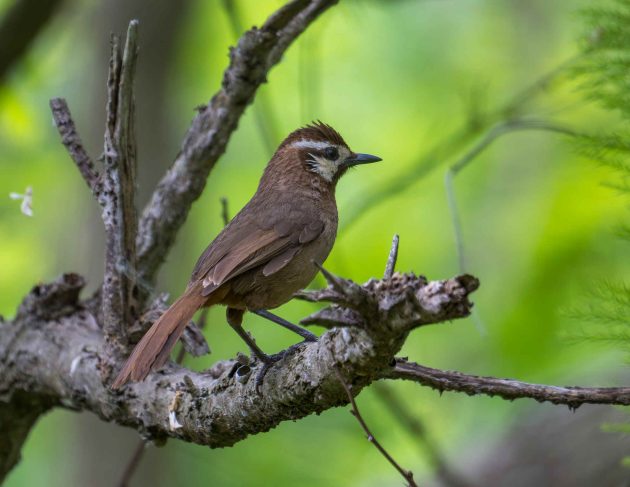
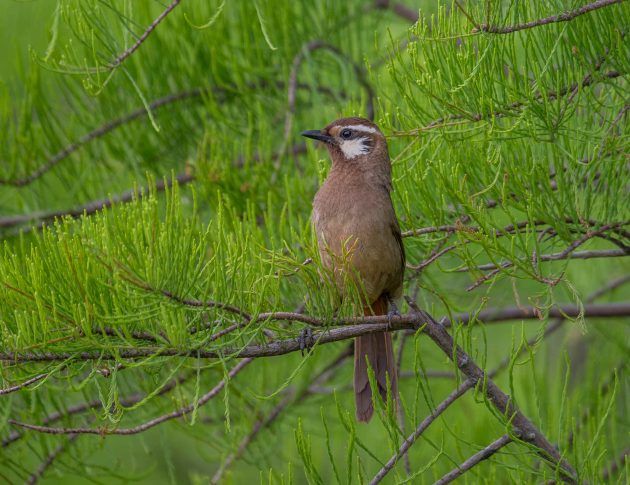
If I were ever to prepare a post on the most unpleasant-sounding bird species, the Oriental Reed Warbler would very likely be on the list.
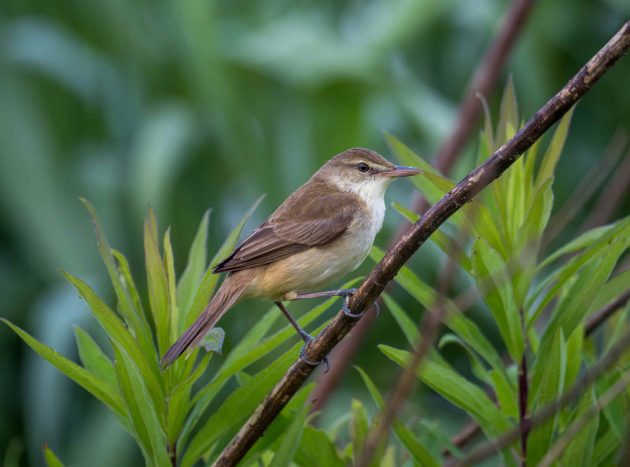
Small consolation: at Nanhui, it is the main host species for the Common Cuckoo. A bird sounding this awful does not deserve any better.
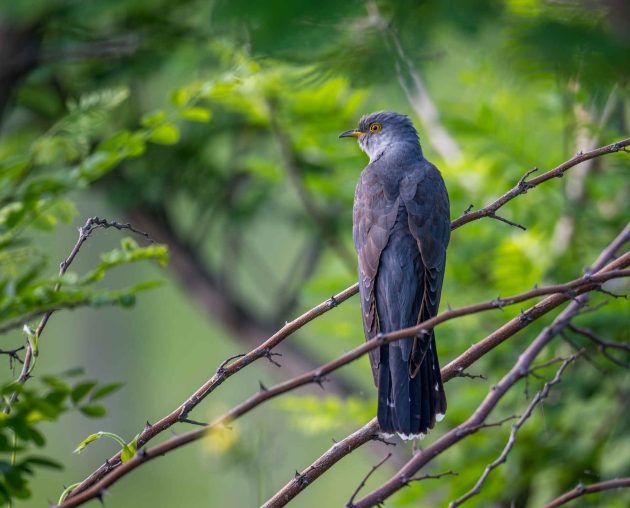
As they migrate through Shanghai, Black-tailed Godwits can be seen at different stages of adopting their breeding plumage. Some presumably are not quite ready to start dating yet …
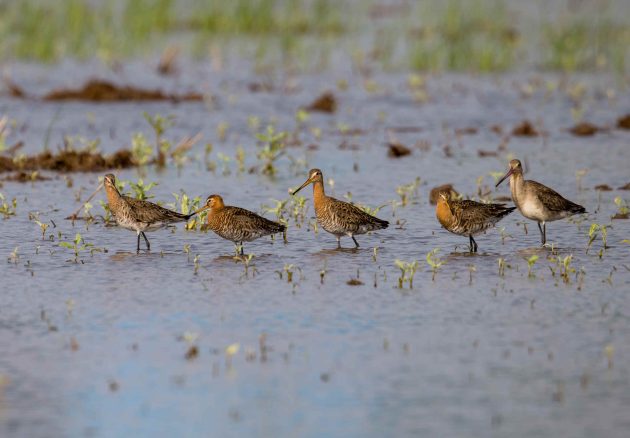
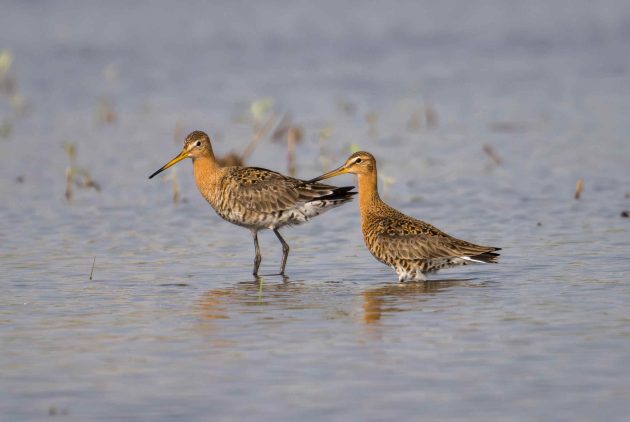
… while the Chinese Pond Herons have already assumed their splendid breeding plumage …
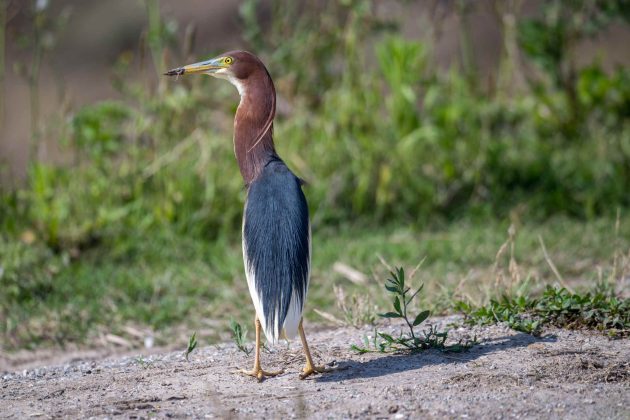
… though some focus on feeding rather than on finding a partner.
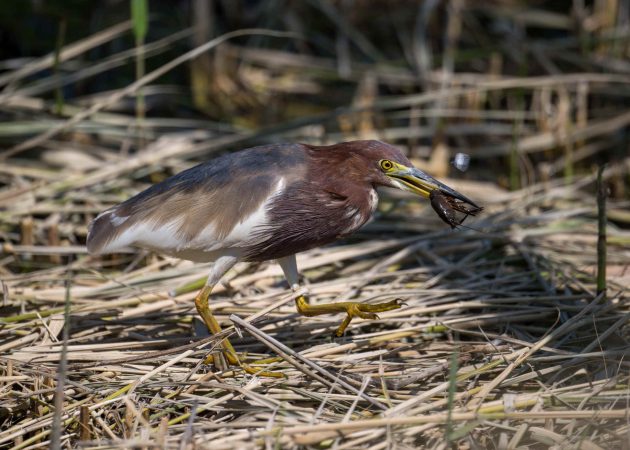
I am generally not very good at recognizing bird calls, but the call of the Grey Treepie is quite distinctive, so I can manage.
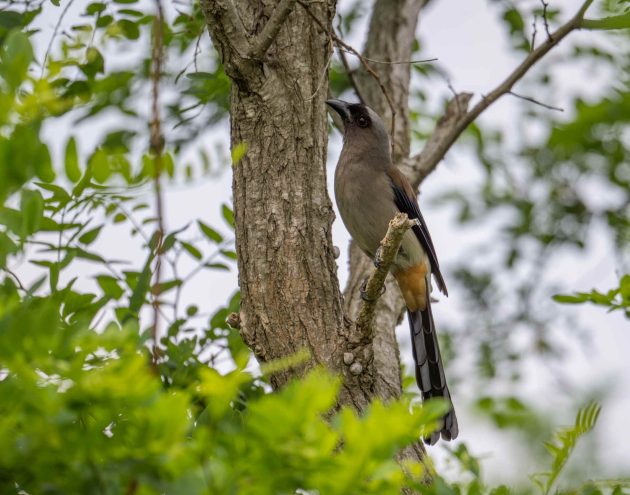
While so far I thought the Forest Wagtail only migrates through Shanghai, I may now have found a place where it breeds in Shanghai …
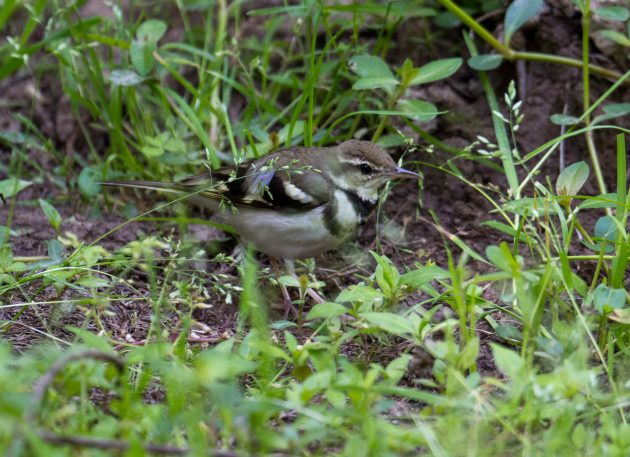
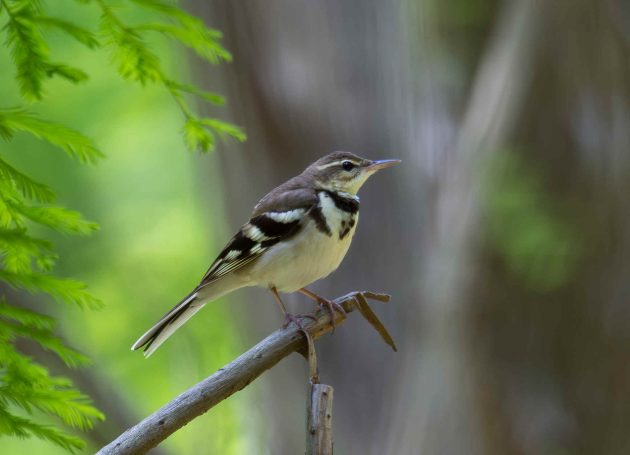
… though probably Chinese patriots will dislike the species due to its scientific name, Dendronanthus indicus.
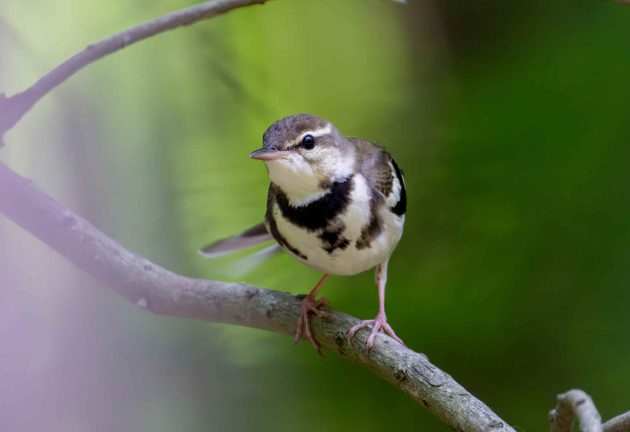
The sex life of Eurasian Wrynecks is not very exciting. Research found that monogamy is the norm in this species – in the sample, less than 1% of all chicks had extra-pair paternity.
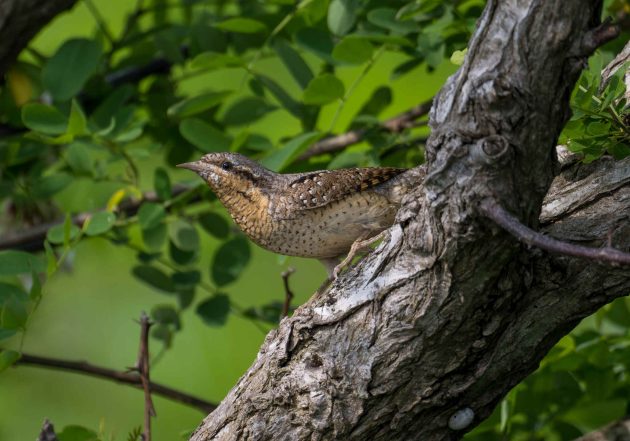
To spice things up at least a little bit, among a sample of 50, three males started a secondary brood with a different partner, which raised their average number of offspring in the season from 6 to 13 – an approach even more rigorously pursued by Elon Musk.
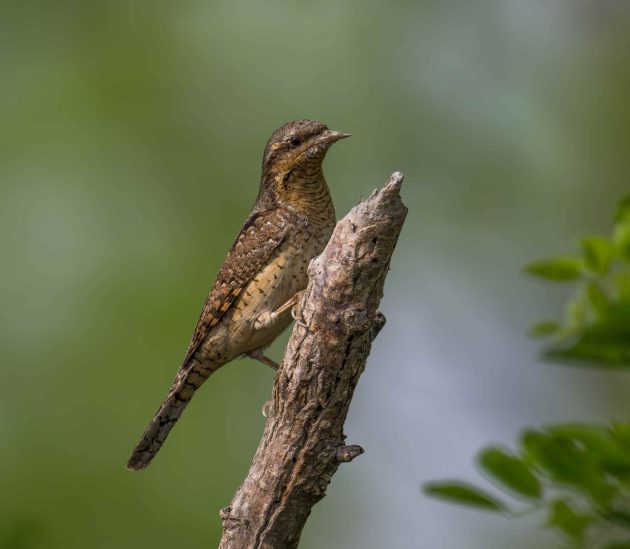
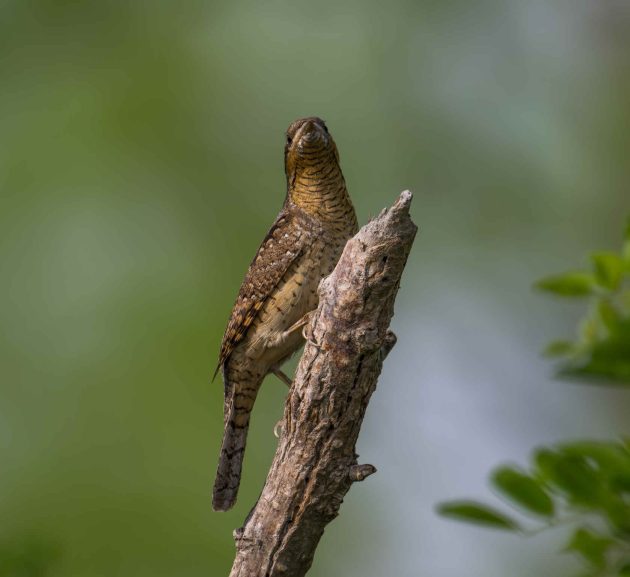
There seems to be some confusion about the name of the Crested Honey Buzzard – to be safe, the HBW uses both this name and (on the same page, without any explanation) the name Oriental Honey-buzzard. Maybe I should subscribe to The Onion instead.
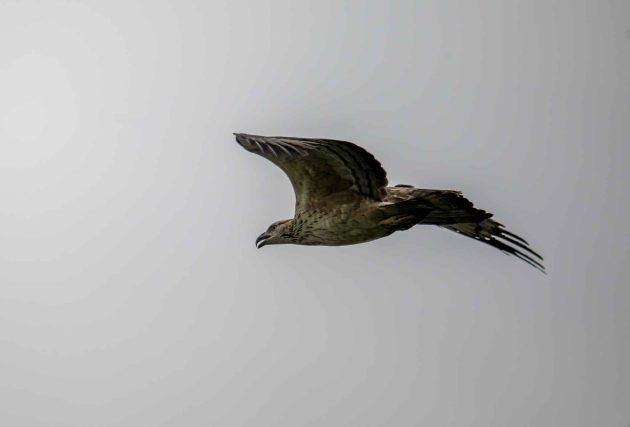
The scientific name Pernis ptilorhynchus indicates that the bird is feather-billed (ptilon means feather, rhynchos means bill), and while the HBW does not explain this (maybe to avian-focused), ChatGPT does: “The name likely refers to the unique feathering at the base of the bill. While many birds of prey have a clean transition from head feathers to beak, the Crested Honey-buzzard has small, fine feathers that extend onto the lores and base of the bill, giving a slightly “fuzzy” or feather-fringed appearance. This is unusual among raptors. This feathering may offer some protection against wasp stings when the bird raids nests—a behavior it is famous for. Though the protective scales on its face and head are more relevant in that regard, the feathering may have caught the attention of the naturalist who described it and inspired the name.”
The other raptor to be featured in this post is one that is more commonly seen in Shanghai, the Eastern Marsh Harrier, as it winters here, rather than just passing through on migration.
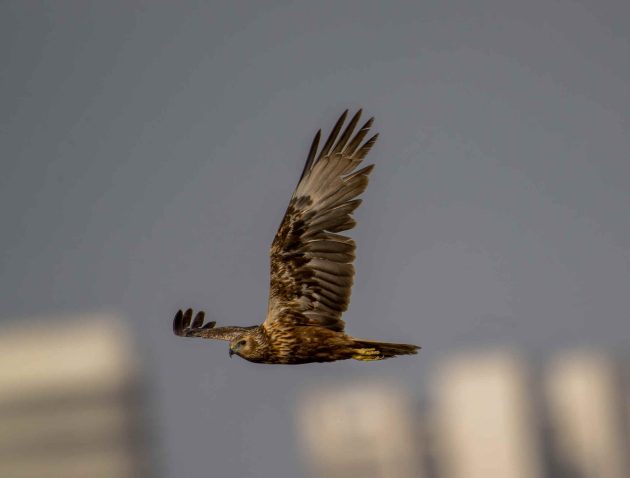
Like me, the Eastern Marsh Harrier does not particularly like humans. A paper found that the breeding success of the species is reduced if there is increased land use within 2 km of the wetland patches used by the species (as I am always in environments with human presence within 2 km, my breeding success is zero).
I hope my local Reed Parrotbills at Nanhui will do better, but a lot of their habitat has been destroyed there just recently, so they now seem to be clinging on to a very narrow strip of reed.
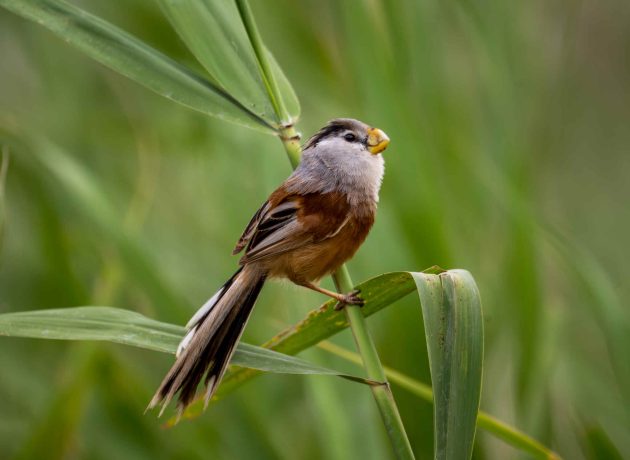
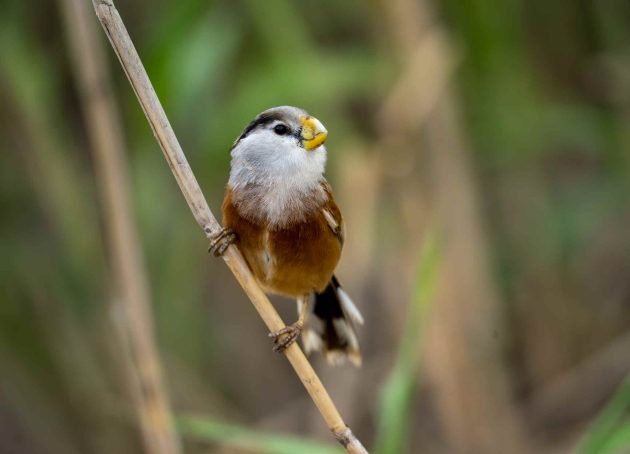
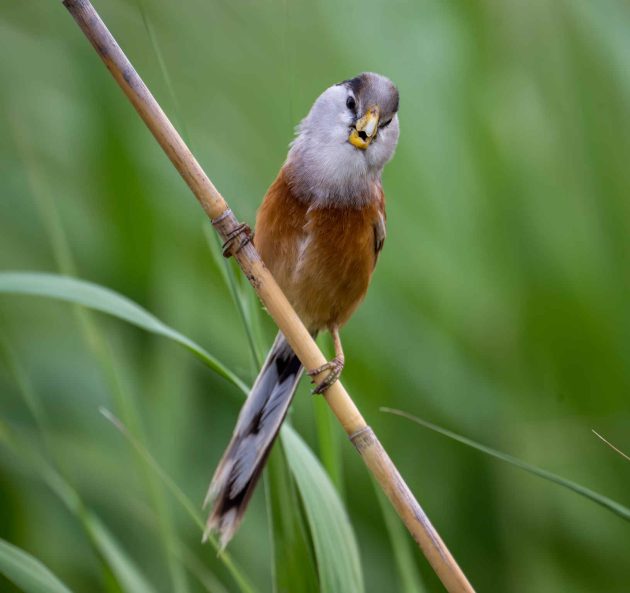
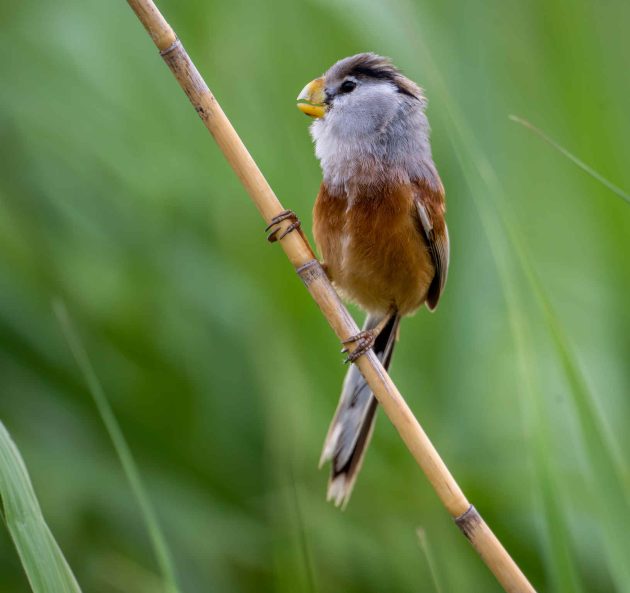
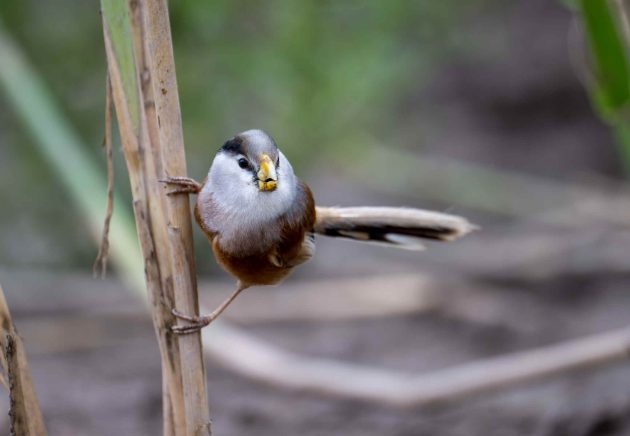
Overall, it was a good month compared to the first four of the year, but not compared to previous months of May in Shanghai. The ongoing destruction of Nanhui takes its toll on the birds. I wish there was “No Destruction” – a rather good song by Foxygen that was released in 2013, but which I just got to know now.
Sample line for New Yorkers: “There’s no need to be an asshole, you’re not in Brooklyn anymore”.


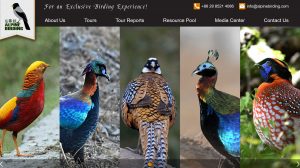
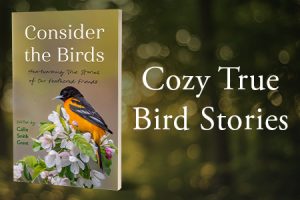
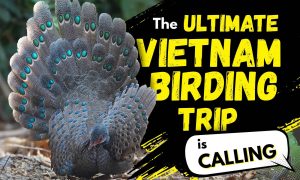

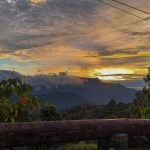
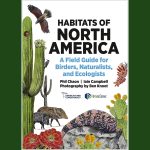




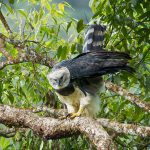
Feel really sorrow for the destructions in Nanhui now?
I really miss the former endless reed bed
Ongoing destruction is widespread and in my little corner of the world in NE China, trees are felled and cleared of vegetation to make gardens to grow spring onions, one of the cheapest commodities in the markets! Senseless and soul destroying for bird lovers such as I.